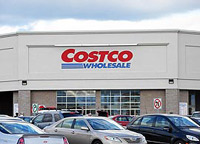
New research from
Deloitte reveals that while consumer package goods execs believe retail clubs like Costco, Sam’s and BJ’s will be the fastest-growing channel in the next few years, most don’t know
what to do about it.
“It surprised us that even though these clubs are among the biggest retailers and a major part of CPG companies’ portfolios, there often isn’t
any cohesive plan in place to develop strategies that effectively use these channels,” Rich Nanda, a principal in Deloitte’s consumer products practice, tells Marketing Daily.
“A number of these companies are still trying to throw things at the wall and see what sticks. And the batting average with that approach is pretty low.”
advertisement
advertisement
Deloitte’s survey of CPG executives found that 89% expect their highest growth to come from the warehouse club channel in the next three years, and 75% say they expect club stores to
expand geographically. (By comparison, only 49% think grocery sales will increase in that period, and 18% are actually expecting sales at neighborhood grocers to decline.)
And they
are well aware that consumers, especially the more affluent ones, like the club shopping experience. About 77% say club shoppers are making more trips; 78% say consumers are spending more at club
stores than other channels, and 63% say they think people like club stores more than they did just three years ago.
And clubs have changed significantly, allocating more
square footage for healthy organic and fresh offerings, as well as personal care products; they’ve increased their exclusive offerings, including private-label merchandise. “If you believe
that we are heading toward a healthier growth economy, this will be come an increasingly important channel,” he says.
Still, while clubs are expanding their appeal, they are
still catering to a more affluent consumer: Previous Deloitte research has found that 71% of those with over $100,000 in household income shop at club stores, and once they are in the store, spend
between 24 and 32% more than the average income club-store consumer. “There are two stories playing out,” he says. “Affluent consumers are the ones who can afford the clubs’
annual fees, as well as the time to drive to an extra destination,” he says. “That is less realistic for a family living paycheck to paycheck.”